While federal law outlines specific Schedule I to V drugs prohibited in the country through the Controlled Substances Act, states also have their own laws establishing legal and illegal drugs. Keep reading to learn more about what types of drugs are prohibited in Florida, where they fall under the scheduling classification, and the severity of possessing these drugs.
Prohibited Drugs in Florida: Schedule I to V
To find a complete list of all the drugs criminalized in Florida, as well as their schedule classification, visit this page that includes the text of the legal statute.
Schedule I
A Schedule I drug is defined as one having a high potential for abuse and is not accepted for medical use in treatment in the United States. Use under medical supervision of Schedule I drugs also do not meet accepted safety standards.
Some examples of common Schedule I drugs are:
- Heroin
- Cannabis
- Ecstasy
- LDS
- Methaqualone
- Peyote
The possession of heroin in Florida could lead to severe penalties. Note that to charge you, the prosecutor must prove beyond a reasonable doubt that you were in possession of a substance and that the substance was heroin. The sentencing for a 3rd degree felony is up to 5 years in prison, $5,000 in fines, and driver’s license suspension.
The sale, delivery, or manufacturing of heroin must similarly be proven beyond a reasonable doubt by the prosecutor that the defendant sold, manufactured, or delivered any amount of heroin or that the defendant possessed any amount of heroin with the intent to sell, manufacture, or deliver the drug. You could be charged with a second degree felony in this case punishable by:
- up to 15 years in prison,
- up to 15 years in probation,
- up to $10,000 in fines, and
- driver’s license suspension.
Florida also has mandatory prison minimums for heroin trafficking, based on the following amounts of the drug:
- 4-14g: $50,000 fine and 3 years in prison;
- 14-28g: $100,000 fine and 15 years in prison;
- 28g-30kg: $500,000 fine and 25 years in prison;
- over 30 kg: $500,000 fine and life in prison.
Schedule II
A substance in Schedule II also has a high potential for abuse, though as opposed to a Schedule I drug it has a currently accepted but severely restricted medical use in treatment in the United States, and any abuse of the substance may lead to severe psychological or physical dependence.
Some examples of Schedule II drugs include:
- Cocaine
- Methamphetamine
- Morphine
- Vicodin
- Fentanyl
- Adderall
- Opium and salts
Florida charges the possession of cocaine as a third degree felony, and possession of more than 28 grams is considered trafficking and charged as a first-degree felony punishable according to the following amounts:
- 28-200g: $50,000 fine and 3 years in prison;
- 200-400g: $100,000 fine and 7 years in prison;
- 400g-150kg: $250,000 fine and 15 years in prison;
- over 150kg: life imprisonment.
First-time cocaine offenders with small amounts of the drug may qualify for diversion programs if the possession was minor enough. Also note that the above penalties will be more severe if sale or distribution occurred near a school.
Schedule III
A drug in Schedule III has a lower potential for abuse than the substances in Schedules I and II, and Schedule III drugs currently have accepted medical use in treatment in the United States. Abuse of Schedule III substances may lead to moderate or low physical dependence or high psychological dependence or, in the case of anabolic steroids, physical damage.
Examples of Schedule III drugs are:
- Products containing less than 90 milligrams of codeine per dosage unit (Tylenol with codeine)
- Ketamine
- Anabolic steroids
- Testosterone
Schedule IV
Schedule IV drugs have a lower potential for abuse relative to Schedule III substances and are currently accepted for medical use in treatment in the United States, though abuse of the substance may lead to limited physical or psychological dependence relative to the substances in Schedule III.
Schedule IV drugs include:
- Xanax
- Valium
- Ativan
- Ambien
- Tramadol
Schedule V
A substance, compound, mixture, or preparation of a Schedule V substance has relatively a low potential for abuse and is currently accepted for medical use in treatment in the United States. The abuse of such compounds or mixtures may lead to limited physical or psychological dependence relative to the substances in Schedule IV.
Examples of some common Schedule V drugs include:
- Cough preparations with less than 200 milligrams of codeine or per 100 milliliters (Robitussin AC)
- Lomotil
- Motofen
- Lyrica
- Parepectolin
Facing Drug Possession Charges? Contact Hubbs Law, P.A.
There is a long list of Schedule I through Schedule V drugs that are prohibited in Florida, either for both recreational and medicinal use or just for recreational use. If you have been charged with possession of a prohibited drug in Florida, contact a lawyer immediately. Experienced legal representation can argue for your right to possess the drug, such as for prescribed medical use, your unknowing and unintentional possession, or a negligent amount of the drug found in actual or constructive possession.
Let Hubbs Law, P.A. help you fight your drug possession charge. Contact our firm today to schedule a consultation with our attorneys.
Disclaimer:
Please note that by reading this blog you are not entering into an attorney-client relationship with Hubbs Law, P.A. This blog only provides general legal information. Every case is unique and you should request a consultation to ensure that you are getting the correct legal advice for your specific case.

